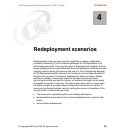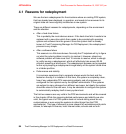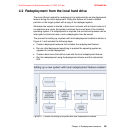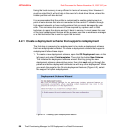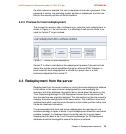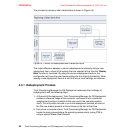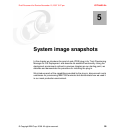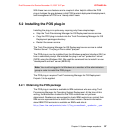
Chapter 4. Redeployment scenarios 91
Draft Document for Review November 15, 2007 3:27 pm 4372ch04.fm
the other options is selected, the user is requested to provide a password. If the
password is correct, the operating system partition is redeployed, and the user
data on the second partition will not be touched.
4.2.3 Process for local redeployment
The process for recovery after a software error, using the local redeployment, is
shown in Figure 4-7. As can be seen, it is effectively a self-service, there is no
need for Central IT to get involved.
Figure 4-7 Process for local redeployment
Central IT is able to contribute to the redeployment process if the point-of-sale
device has remote control capabilities though an ethernet KVM. However, in
most cases the local redeployment is utilized by a power user or a field
technician dispatched from central IT.
4.3 Redeployment from the server
Redeployment from the server involves re-running the same deployment scheme
to the device. In the case of server redeployment you are leveraging the
inventory and other database information that is stored about the device on the
Tivoli Provisioning Manager for OS Deployment server that is captured at the
time the machine was originally deployed. This information can then be reused to
redeploy the same configuration to the same device. This is different from local
redeployment which uses the local information in the hidden partition rather than
the server database information.
It is recommended that local and server redeployment be used as part of a
combined strategy to repair a device. A local redeployment should be used when
possible; however, if a hardware failure cause the need for a server based
redeployment the data in the Tivoli Provisioning Manager for OS Deployment
database should be leveraged to ensure the device is restored.



